Popular categories
Looking for a yarn?

45% Alpaca, 30% Polyamide, 25% Wool
from 2.95 € /50g
The yarn cost is calculated from the pattern’s smallest size and the yarn’s cheapest product type. Looking for an even better price? You might find it on the DROPS Deals!
Desert Mirage Cardigan
Knitted jacket in DROPS Nord. Piece is knitted top down with raglan, broken rib and stripes. Size: S - XXXL
DROPS design: Pattern no-057
Yarn group A
----------------------------------------------------------
SIZE:
S - M - L - XL - XXL - XXXL
MATERIALS:
DROPS NORD from Garnstudio (belongs to yarn group A)
250-300-300-350-350-400 g colour 07, light beige
150-150-150-150-150-200 g colour 12, powder pink
DROPS BUTTON NO 521: 5-5-5-6-6-6 pieces
NEEDLES:
DROPS CIRCULAR NEEDLE SIZE 3 mm: Length 40 and 80 cm.
DROPS CIRCULAR NEEDLE SIZE 2.5 mm: Length: 80 cm
DROPS DOUBLE POINTED NEEDLES SIZE 3 mm
DROPS DOUBLE POINTED NEEDLES SIZE 2.5 mm
The technique MAGIC LOOP can be used – you then only need circular needle of 80 cm in each size.
KNITTING TENSION:
24 stitches in width and 32 rows vertically with pattern = 10 x 10 cm.
NOTE! Remember that needle size is only a suggestion. If you have too many stitches on 10 cm switch to larger needles. If you have too few stitches on 10 cm switch to smaller needles.
-------------------------------------------------------
Alternative Yarn – See how to change yarns here
Yarn Groups A to F – Use the same pattern and change the yarn here
Yarn usage using an alternative yarn – Use our yarn converter here
-------------------------------------------------------
Women Jackets & Cardigans Basic Cardigansassembly free raglan rib round neck stripes top down

45% Alpaca, 30% Polyamide, 25% Wool
from 2.95 € /50g
The yarn cost is calculated from the pattern’s smallest size and the yarn’s cheapest product type. Looking for an even better price? You might find it on the DROPS Deals!
- English (UK/cm), Latvia
- Česky
- Dansk
- Deutsch
- Eesti keel
- English (UK/cm)
- English (US/in)
- Español
- Français
- Íslenska
- Italiano
- Magyar
- Nederlands
- Norsk
- Polski
- Português
- Suomi
- Svenska
- English (UK/cm), Bulgaria
- English (UK/cm), Croatia
- English (UK/cm), Greece
- English (UK/cm), Lithuania
- English (UK/cm), Romania
- English (UK/cm), Slovenia
- Česky, Slovakia
Pattern instructions
EXPLANATION FOR THE PATTERN:
----------------------------------------------------------
PATTERN:
See diagrams A.1, A.2 and A.3. Diagrams show all rows in pattern seen from the right side.
GARTER STITCH (back and forth):
Knit all rows.
1 ridge vertically = knit 2 rows.
STRIPES:
* Work 7-7-7-8-8-8 cm with colour light beige, work 3 cm with colour powder pink *, work from *-*.
BUTTONHOLES:
Decrease for buttonholes on right band (when garment is worn). Decrease from right side when 4 stitches remain on row as follows: Make 1 yarn over, knit the next 2 stitches together, knit the last 2 stitches. On next row knit yarn over to make holes.
Decrease first buttonhole when rib in the neck measures 3 cm. Then decrease the next 4-4-4-5-5-5 approx. 10-10-10-9½-9½-10 cm between each buttonhole.
RAGLAN:
Increase 1 stitch in each side of 7 stitches (= A.2) in every transition between body and sleeves (= 8 stitches increased on round). Increase 1 stitch by making 1 yarn over. On next row work yarn overs twisted to avoid holes. Then work the new stitches in pattern A.3/A.1.
DECREASE TIP (applies to sleeves):
Decrease 1 stitch on each side of marker thread as follows: Work until 3 stitches remain before marker thread and knit 2 together, knit 2 (marker thread is between these 2 stitches), slip 1 stitch knitwise, knit 1, pass slipped stitch over stitch worked.
----------------------------------------------------------
START THE PIECE HERE:
----------------------------------------------------------
JACKET - SHORT OVERVIEW OF THE PIECE:
Work neck edge and yoke back and forth on circular needle from mid front, work top down. Now divide yoke for body and sleeves. Work body back and forth on circular needle. Work sleeves in the round on double pointed needles/a short circular needle.
NECK EDGE:
Cast on 133-133-141-141-149-149 stitches on circular needle size 2.5 mm with colour light beige in DROPS Nord. Purl 1 row from wrong side. Work next row as follows - from right side and mid front as follows:
Work 7 band stitches in garter stitch, * knit 1, purl 1 *, work from *-* until 8 stitches remain, knit 1 and finish with 7 band stitches in garter stitch.
Work like this until rib measures 4 cm.
Insert 1 marker after band, at the beginning of row mid front. Measure yoke from this marker. Work STRIPES - see explanation above. The 4 cm in the neck edge are not counted with the stripes (i.e. work 11-11-11-12-12-12 cm in total with colour light beige before first stripe with colour powder pink).
YOKE:
Switch to circular needle size 3 mm and work as follows - from right side: 7 band stitches in garter stitch, A.1 over the next 18-18-20-20-22-22 stitches, A.2, A.3 over the next 9 stitches, A.2, A.3 over the next 37-37-41-41-45-45 stitches, A.2, A.3 over the next 9 stitches, A.2, A.3 over the next 18-18-20-20-22-22 stitches, and finish with 7 band stitches in garter stitch. Continue this pattern, on next row from right side begin increase for RAGLAN – read explanation above (= 8 stitches increased). Increase like this on every other row (= every row from right side) 26-32-34-40-44-50 times in total = 341-389-413-461-501-549 stitches. REMEMBER THE KNITTING TENSION!
Work without increase until piece measures 21-23-25-27-29-31 cm from marker thread. Now divide yoke for body and sleeves:
Work the first 55-61-65-71-77-83 stitches as before (left front piece), slip the next 67-79-83-95-103-115 stitches on a thread for sleeve, cast on 9-9-11-11-13-13 new stitches on row (in the side under sleeve), work the next 97-109-117-129-141-153 stitches as before (back piece), slip the next 67-79-83-95-103-115 stitches on a thread for sleeve, cast on 9-9-11-11-13-13 new stitches on row (in the side under sleeve) and work the remaining 55-61-65-71-77-83 stitches as before (right front piece).
BODY:
= 225-249-269-293-321-345 stitches. Work in A.1 and back and forth with 7 band stitches in garter stitch in each side towards mid front. Continue with stripes but when 4 stripes have been worked in total with colour powder pink, finish the piece with colour light beige. Work until piece measures 24 cm from division - finish with a row from wrong side. 4 cm remain until finished measurements. Try the jacket and work to desired length. Knit 1 row from right side while increasing 46-50-54-58-64-70 stitches evenly, do not increase over band stitches = 271-299-323-351-385-415 stitches.
Switch to circular needle size 2.5 mm. Work next row as follows from wrong side: 7 band stitches in garter stitch, * purl 1, knit 1 *, repeat from *-* until 8 stitches remain on needle, purl 1, and finish with 7 band stitches in garter stitch. Continue rib like this for 4 cm. Cast off. Jacket measures approx. 52-54-56-58-60-62 cm from shoulder and down.
SLEEVE:
Slip the 67-79-83-95-103-115 stitches from thread in one side of piece back on a short circular needle/double pointed needles size 3 mm, and pick in addition up 1 stitch in each of the 9-9-11-11-13-13 stitches cast on under sleeve = 76-88-94-106-116-128 stitches. Insert a marker thread in the middle of the new stitches. Work pattern as before and continue with stripes. When 5 stripes have been worked in total with colour powder pink, finish the piece with colour light beige. AT THE SAME TIME when piece measures 3-3-3-2-2-3 cm, decrease 2 stitches under sleeve - READ DECREASE TIP. Decrease like this approx. every 6-3-2½-2-1½-1 cm 6-10-10-14-18-22 times in total = 64-68-74-78-80-84 stitches. Continue until piece measures 35-34-31-31-29-28 cm from division. Switch to double pointed needles size 2.5 mm. Work rib (knit 1/purl 1) for 4 cm. Cast off. Sleeve measures approx. 39-38-35-35-33-32 cm from division. Work the other sleeve the same way.
ASSEMBLY:
Sew the buttons on to left band.
Diagram

|
= knit from the right side, purl from the wrong side |

|
= purl from the right side, knit from the wrong side |
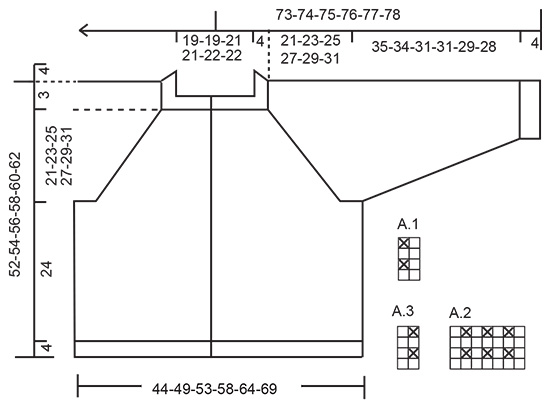
What can you do with our patterns? You can share DROPS patterns online, using the pattern original picture, materials, name and number. But you are NOT ALLOWED to reproduce the complete pattern digitally in any way. Yarn stores are welcome to use the DROPS pattern database to promote the sale of our assortment. You can print out our patterns, make as many copies as you’d like. The only thing we ask is that you don't make any changes / additions to the original printed document. And that the patterns according to the DROPS philosophy are given out to the consumers for free. Editorials that wish to publish our patterns in printed books or magazines can contact us for more information. The sale of garments based on DROPS patterns is permitted as long as they are sold as single items or per order. Further commercial use of the patterns is not permitted. It has to be clearly stated that the garment is made based on a design from DROPS DESIGN. The use of clothing labels of which DROPS DESIGN forms part is conditioned by the inclusion of the following text: “A DROPS DESIGN made by …..”. The use of DROPS photos for marketing purposes/sales is only permitted in connection with the use/sale of DROPS products. The photos may not be cut or edited and the logo should be clearly visible.
We reserve the right to withdraw the permission for use of our patterns at any time, notwithstanding the reason.
Each of our patterns has specific tutorial videos to help you.
These step-by-step tutorials might also help you:
Why is the knitting/crochet tension so important?
Knitting tension is what determines the final measurements of your work, and is usually measured per 10 x 10 cm. It is provided like so: number of stitches in width x number of rows in height - eg: 19 stitches x 26 rows = 10 x 10 cm.
The knitting tension is very individual; some people knit/crochet loosely while others work tightly. You adjust the knitting tension with the needle size, which is why the suggested needle size is only meant as a guide! You need to adjust this (up or down) to ensure that YOUR knitting tension matches the knitting tension provided in the pattern. If you work with a different knitting tension than provided you will have a different yarn consumption, and your work will have different measurements than what the pattern suggests.
The knitting tension also determines which yarns can replace each other. As long as you achieve the same knitting tension you can replace one yarn with another.
See DROPS lesson: How to measure your tension/gauge
See DROPS video: How to make a gauge tension swatch
How do I know how many balls of yarn I need?
The required amount of yarn is provided in grams, eg: 450 g. To calculate how many balls you’ll need you first need to know how many grams are in 1 ball (25g, 50g or 100g). This information is available if you click on the individual yarn quality on our pages. Divide the amount required with the amount of each ball. For example, if each ball is 50g (the most common amount), the calculation will be as follows: 450 / 50 = 9 balls.
Can I use a different yarn than what the pattern suggests?
The important thing when changing from one yarn to another is that the knitting/crochet tension remains the same. This is so that the measurements of the finished piece will be the same as on the sketch provided. It is easier to achieve the same knitting tension using yarns from the same yarn group. It is also possible to work with multiple strands of a thinner yarn to achieve the knitting tension of a thicker one. Please try our yarn converter. We recommend you to always work a test swatch.
Please NOTE: when changing yarn the garment might have a different look and feel to the garment in the photo, due to individual properties and qualities of each yarn.
See DROPS lesson: Can I use a different yarn than the one mentioned in the pattern?
What are the yarn groups?
All our yarns are categorised into yarn groups (from A to F) according to thickness and knitting tension – group A contains the thinnest yarns and group F the thickest. This makes it easier for you to find alternative yarns to our patterns, should you wish to switch yarn. All yarns within the same group have a similar knitting tension and can easily replace each other. However, different yarn qualities have different structures and properties which will give the finished work a unique look and feel.
How do I use the yarn calculator?
At the top of all our patterns you’ll find a link to our yarn calculator, which is a helpful tool should you wish to use a different yarn than suggested. By filling in the yarn quality you wish to replace, the amount (in your size) and number of strands, the calculator will present good alternative yarns with the same knitting tension. Additionally it will tell you how much you’ll require in the new qualities and whether you’ll need to work with multiple strands. Most skeins are 50g (some are 25g or 100g).
If the pattern is worked with multiple colours, every colour will have to be calculated separately. Similarly, if the pattern is worked with several strands of different yarns (for example 1 strand Alpaca and 1 strand Kid-Silk) you will have to find alternatives for each, individually.
Why do you show discontinued yarns in the patterns?
Since different yarns have different qualities and textures we have chosen to keep the original yarn in our patterns. However, you can easily find options among our available qualities by using our yarn calculator, or simply pick a yarn from the same yarn group.
It is possible that some retailers still have discontinued yarns in stock, or that someone has a few skeins at home that they would like to find patterns for.
The yarn calculator will provide both alternative yarn as well as required amount in the new quality.
What size should I knit?
If you think it's hard to decide what size to make, it can be a good idea to measure a garment you own already and like the size of. Then you can pick the size by comparing those measures with the ones available in the pattern's size chart.
You'll find the size chart at the bottom of the pattern.
See DROPS lesson: How to read size chart
Why do I get the wrong knitting tension with the suggested needle size?
The needle size provided in the pattern serves only as a guide, the important thing is to follow the knitting tension. And since knitting tension is very individual, you will have to adjust the needle size to ensure that YOUR tension is the same as in the pattern – maybe you’ll have to adjust 1, or even 2 needle sizes, up or down to achieve the correct tension. For this, we recommend that you work test swatches.
Should you work with a different knitting tension than the one provided, the measurements of the finished garment might deviate from the measurement sketch.
See DROPS lesson: How to measure your tension/gauge
See DROPS video: How to make a tension/gauge swatch
Why is the pattern worked top-down?
Working a garment top-down provides more flexibility and room for personal adjustment. For example it is easier to try the garment on while working, as well as making adjustments to length of yoke and shoulder caps.
The instructions are carefully explaining every step, in the correct order. Diagrams are adjusted to the knitting direction and are worked as usual.
How do I work according to a knitting diagram?
The diagram depicts all rows/rounds, and every stitch seen from the right side. It is read from bottom to top, from right to left. 1 square = 1 stitch.
When working back and forth, every other row is worked from the right side and every other row is worked from the wrong side. When working from the wrong side, the diagram will have to be worked reversed: from left to right, knit stitches are purled, purl stitches are knit etc.
When working in the round every round is worked from the right side and the diagram are worked from right to left on all rounds.
See DROPS lesson: How to read knitting diagrams
How do I work according to a crochet diagram?
The diagram depicts all rows/rounds, and every stitch seen from the right side. It is worked from bottom to top, from right to left.
When working back and forth every other row is worked from the right side: from right to left and every other row is worked from the wrong side: from left to right.
When working in the round, every row in the diagram are worked from the right side, from right to left.
When working a circular diagram you start in the middle and work your way outwards, counter clockwise, row by row.
The rows usually start with a given number of chain stitches (equivalent to the height of the following stitch), this will either be depicted in the diagram or explained in the pattern.
See DROPS lesson: How to read crochet diagrams
How do I work several diagrams simultaneously on the same row/round?
Instructions for working several diagrams after each other on the same row/round, will often be written like so: “work A.1, A.2, A.3 a total of 0-0-2-3-4 times". This means you work A.1 once, then A.2 is worked once, and A.3 is repeated (in width) the number of times provided for your size – in this case like so: S = 0 times, M = 0 times, L=2 times, XL= 3 times and XXL = 4 times.
The diagrams are worked as usual: begin with the first row in A.1, then work the first row in A.2 etc.
See DROPS lesson: How to read knitting diagrams
See DROPS lesson: How to read crochet diagrams
Why are the sleeves shorter in larger sizes?
The total width of the garment (from wrist-to-wrist) will be larger in the larger sizes, despite the actual sleeves being shorter. The larger sizes have longer sleeve caps and wider shoulders, so there will be a good fit in all sizes.
Where on the garment is the length measured?
The measurement sketch/schematic drawing provides information regarding the full length of the garment. If it’s a jumper or a jacket the length is measured from the highest point on the shoulder closest to the neckline, and straight down to the bottom of the garment. It is NOT measured from the tip of shoulder. Similarly, the length of yoke is measured from the highest point on the shoulder and down to where yoke is split into body and sleeves.
On a jacket measures are never taken along bands, unless specifically stated. Always measure inside band stitches when measuring the length.
See DROPS lesson: How to read a schematic drawing
What is a repeat?
Diagrams are often repeated on the round or in height. 1 repeat is the diagram the way it appears in the pattern. If it says to work 5 repeats of A.1 in the round, then you work A.1 a total of 5 times after/next to each other in the round. If it says to work 2 repeats of A.1 vertically/in height you work the entire diagram once, then begin again at the start and work the entire diagram one more time.
Why does the piece start with more chain stitches than it’s worked with?
Chain stitches are slightly narrower than other stitches and to avoid working the cast-on edge too tight, we simply chain more stitches to begin with. The stitch count will be adjusted on the following row to fit the pattern and measurement sketch.
Why increase before the rib edge when the piece is worked top-down?
The rib edge is more elastic and will contract slightly compared to, for example, stocking stitch. By increasing before the rib edge, you avoid a visible difference in width between the rib edge and the rest of the body.
Why increase in the cast-off edge?
It’s very easy to cast off too tightly, and by making yarn overs while casting off (and simultaneously casting these off) you avoid a too tight cast off edge.
See DROPS video: How to bind off with yarn overs (yo)
How do I increase/decrease on every 3rd and 4th row/round alternately?
To achieve an even increase (or decrease) you can increase on, for example: every 3rd and 4th row alternately, like so: work 2 rows and increase on the 3rd row, work 3 rows and increase on the 4th. Repeat this until the increase is complete.
See DROPS lesson: Increase or decrease 1 st on every 3rd and 4th row alternately
How can I work a jacket in the round instead of back and forth?
Should you prefer to work in the round instead of back and forth, you may of course adjust the pattern. You’ll need to add steeks mid-front (usually 5 stitches), and follow the instructions. When you would normally turn and work from the wrong side, simply work across the steek and continue in the round. At the end you’ll cut the piece open, pick up stitches to work bands, and cover the cut edges.
See DROPS video: How to knit steeks and cut open
Can I work a jumper back and forth instead of in the round?
Should you prefer to work back and forth instead of in the round, you may of course adjust the pattern so you work the pieces separately and then assemble them at the end. Divide the stitches for the body in 2, add 1 edge stitch in each side (for sewing) and work the front and back pieces separately.
See DROPS lesson: Can I adapt a pattern for circular needles into straight needles?
Why is the pattern slightly different than what I see in the photo?
Pattern repeats can vary slightly in the different sizes, in order to get the correct proportions. If you’re not working the exact same size as the garment in the photo, yours might deviate slightly. This has been carefully developed and adjusted so that the complete impression of the garment is the same in all sizes.
Make sure to follow instructions and diagrams for your size!
How do I make a women’s size garment into a men’s size one?
If you have found a pattern you like which is available in women’s size it’s not very difficult to convert it to men’s size. The biggest difference will be the length of sleeves and body. Start working on the women size that you think would fit across the chest. The additional length will be worked right before you cast off for the armhole/sleeve cap. If the pattern is worked top-down you can add the length right after the armhole or before the first decrease on sleeve.
Regarding additional yarn amount, this will depend on how much length you add, but it is better with a skein too many than too few.
How do I prevent a hairy garment from shedding?
All yarns will have excess fibres (from production) that might come off as lint or shedding. Brushed yarns (ie hairier yarns) have more of these loose, excess fibres, causing more shedding.
Shedding also depends on what is worn under or over the garment, and whether this pulls at the yarn fibres. It’s therefore not possible to guarantee that there will be no shedding
Below are some tips on how to get the best result when working with hairier yarns:
1. When the garment is finished (before you wash it) shake it vigorously so the looser hairs come off. NOTE: do NOT use a lint roller, brush or any method that pulls at the yarn.
2. Place the garment in a plastic bag and put it in your freezer - the temperature will cause the fibres to become less attached to each other, and excess fibres will come off easier.
3. Leave in the freezer for a few hours before taking it out and shaking it again.
4. Wash the garment according to the instructions on the yarn label.
Why does my garment pill?
Pilling is a natural process that happens to even the most exclusive of fibers. It's a natural sign of wear and tear that is hard to avoid, and that is most visible in high friction areas of your garment like a sweater's arms and cuffs.
You can make your garment look as new by removing the pilling, using a fabric comb or a pill/lint remover.
In the meantime, you can read the questions and answers that others have left to this pattern or join the DROPS Workshop on Facebook to get help from fellow knitters/crocheters!
You might also like...
Desert Mirage Cardigan |
|||||||
 |
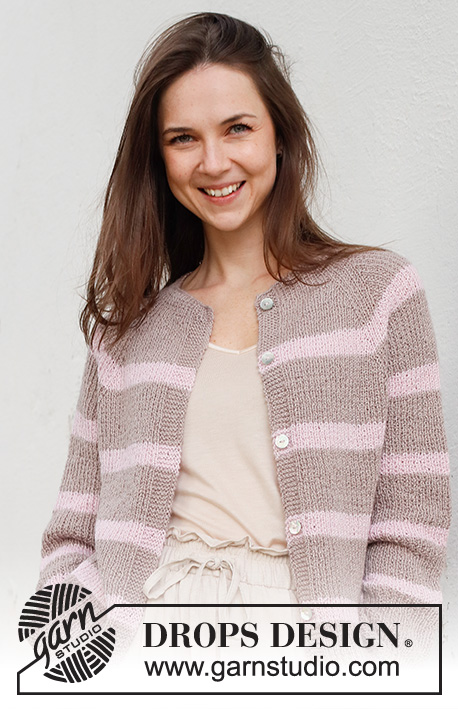 |
||||||
Knitted jacket in DROPS Nord. Piece is knitted top down with raglan, broken rib and stripes. Size: S - XXXL
DROPS 232-15 |
|||||||
|
---------------------------------------------------------- EXPLANATION FOR THE PATTERN: ---------------------------------------------------------- PATTERN: See diagrams A.1, A.2 and A.3. Diagrams show all rows in pattern seen from the right side. GARTER STITCH (back and forth): Knit all rows. 1 ridge vertically = knit 2 rows. STRIPES: * Work 7-7-7-8-8-8 cm with colour light beige, work 3 cm with colour powder pink *, work from *-*. BUTTONHOLES: Decrease for buttonholes on right band (when garment is worn). Decrease from right side when 4 stitches remain on row as follows: Make 1 yarn over, knit the next 2 stitches together, knit the last 2 stitches. On next row knit yarn over to make holes. Decrease first buttonhole when rib in the neck measures 3 cm. Then decrease the next 4-4-4-5-5-5 approx. 10-10-10-9½-9½-10 cm between each buttonhole. RAGLAN: Increase 1 stitch in each side of 7 stitches (= A.2) in every transition between body and sleeves (= 8 stitches increased on round). Increase 1 stitch by making 1 yarn over. On next row work yarn overs twisted to avoid holes. Then work the new stitches in pattern A.3/A.1. DECREASE TIP (applies to sleeves): Decrease 1 stitch on each side of marker thread as follows: Work until 3 stitches remain before marker thread and knit 2 together, knit 2 (marker thread is between these 2 stitches), slip 1 stitch knitwise, knit 1, pass slipped stitch over stitch worked. ---------------------------------------------------------- START THE PIECE HERE: ---------------------------------------------------------- JACKET - SHORT OVERVIEW OF THE PIECE: Work neck edge and yoke back and forth on circular needle from mid front, work top down. Now divide yoke for body and sleeves. Work body back and forth on circular needle. Work sleeves in the round on double pointed needles/a short circular needle. NECK EDGE: Cast on 133-133-141-141-149-149 stitches on circular needle size 2.5 mm with colour light beige in DROPS Nord. Purl 1 row from wrong side. Work next row as follows - from right side and mid front as follows: Work 7 band stitches in garter stitch, * knit 1, purl 1 *, work from *-* until 8 stitches remain, knit 1 and finish with 7 band stitches in garter stitch. Work like this until rib measures 4 cm. Insert 1 marker after band, at the beginning of row mid front. Measure yoke from this marker. Work STRIPES - see explanation above. The 4 cm in the neck edge are not counted with the stripes (i.e. work 11-11-11-12-12-12 cm in total with colour light beige before first stripe with colour powder pink). YOKE: Switch to circular needle size 3 mm and work as follows - from right side: 7 band stitches in garter stitch, A.1 over the next 18-18-20-20-22-22 stitches, A.2, A.3 over the next 9 stitches, A.2, A.3 over the next 37-37-41-41-45-45 stitches, A.2, A.3 over the next 9 stitches, A.2, A.3 over the next 18-18-20-20-22-22 stitches, and finish with 7 band stitches in garter stitch. Continue this pattern, on next row from right side begin increase for RAGLAN – read explanation above (= 8 stitches increased). Increase like this on every other row (= every row from right side) 26-32-34-40-44-50 times in total = 341-389-413-461-501-549 stitches. REMEMBER THE KNITTING TENSION! Work without increase until piece measures 21-23-25-27-29-31 cm from marker thread. Now divide yoke for body and sleeves: Work the first 55-61-65-71-77-83 stitches as before (left front piece), slip the next 67-79-83-95-103-115 stitches on a thread for sleeve, cast on 9-9-11-11-13-13 new stitches on row (in the side under sleeve), work the next 97-109-117-129-141-153 stitches as before (back piece), slip the next 67-79-83-95-103-115 stitches on a thread for sleeve, cast on 9-9-11-11-13-13 new stitches on row (in the side under sleeve) and work the remaining 55-61-65-71-77-83 stitches as before (right front piece). BODY: = 225-249-269-293-321-345 stitches. Work in A.1 and back and forth with 7 band stitches in garter stitch in each side towards mid front. Continue with stripes but when 4 stripes have been worked in total with colour powder pink, finish the piece with colour light beige. Work until piece measures 24 cm from division - finish with a row from wrong side. 4 cm remain until finished measurements. Try the jacket and work to desired length. Knit 1 row from right side while increasing 46-50-54-58-64-70 stitches evenly, do not increase over band stitches = 271-299-323-351-385-415 stitches. Switch to circular needle size 2.5 mm. Work next row as follows from wrong side: 7 band stitches in garter stitch, * purl 1, knit 1 *, repeat from *-* until 8 stitches remain on needle, purl 1, and finish with 7 band stitches in garter stitch. Continue rib like this for 4 cm. Cast off. Jacket measures approx. 52-54-56-58-60-62 cm from shoulder and down. SLEEVE: Slip the 67-79-83-95-103-115 stitches from thread in one side of piece back on a short circular needle/double pointed needles size 3 mm, and pick in addition up 1 stitch in each of the 9-9-11-11-13-13 stitches cast on under sleeve = 76-88-94-106-116-128 stitches. Insert a marker thread in the middle of the new stitches. Work pattern as before and continue with stripes. When 5 stripes have been worked in total with colour powder pink, finish the piece with colour light beige. AT THE SAME TIME when piece measures 3-3-3-2-2-3 cm, decrease 2 stitches under sleeve - READ DECREASE TIP. Decrease like this approx. every 6-3-2½-2-1½-1 cm 6-10-10-14-18-22 times in total = 64-68-74-78-80-84 stitches. Continue until piece measures 35-34-31-31-29-28 cm from division. Switch to double pointed needles size 2.5 mm. Work rib (knit 1/purl 1) for 4 cm. Cast off. Sleeve measures approx. 39-38-35-35-33-32 cm from division. Work the other sleeve the same way. ASSEMBLY: Sew the buttons on to left band. |
|||||||
Diagram explanations |
|||||||
|
|||||||

|
|||||||
|
Have you made this or any other of our designs? Tag your pictures in social media with #dropsdesign so we can see them! Do you need help with this pattern?You'll find tutorial videos, a Comments/Questions area and more by visiting the pattern on garnstudio.com. © 1982-2024 DROPS Design A/S. We reserve all rights. This document, including all its sub-sections, has copyrights. Read more about what you can do with our patterns at the bottom of each pattern on our site. |
|||||||
With over 40 years in knitting and crochet design, DROPS Design offers one of the most extensive collections of free patterns on the internet - translated to 17 languages. As of today we count 304 catalogues and 11422 patterns - 11422 of which are translated into English (UK/cm).
We work hard to bring you the best knitting and crochet have to offer, inspiration and advice as well as great quality yarns at incredible prices! Would you like to use our patterns for other than personal use? You can read what you are allowed to do in the Copyright text at the bottom of all our patterns. Happy crafting!

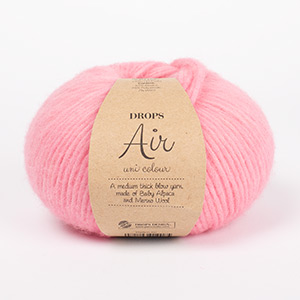







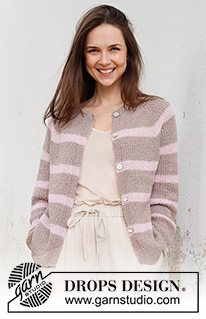
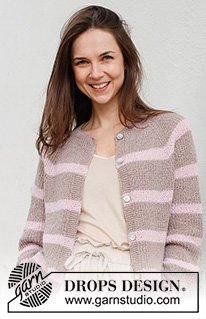

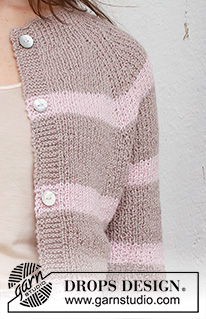
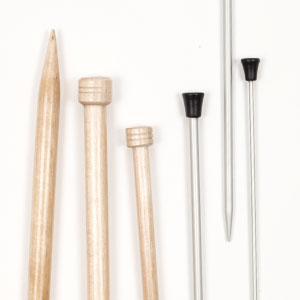

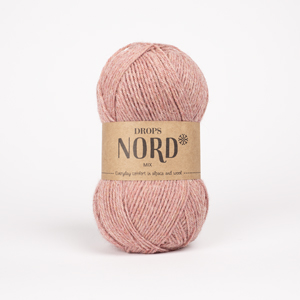

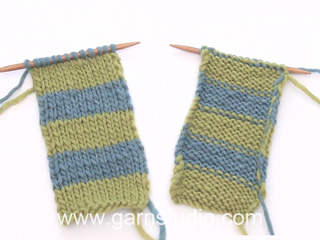
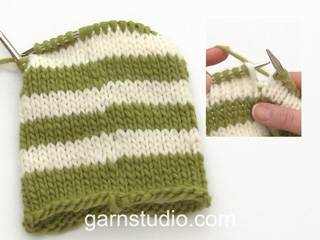
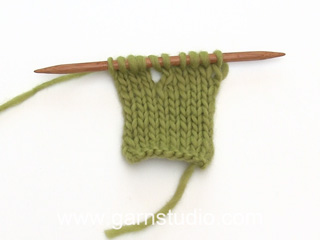
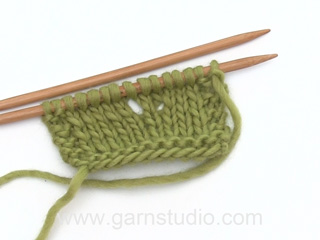
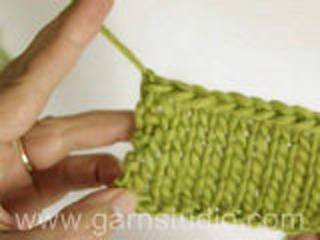
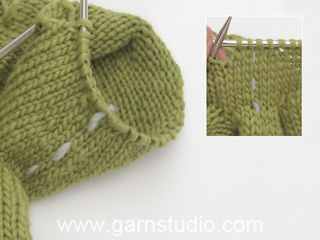
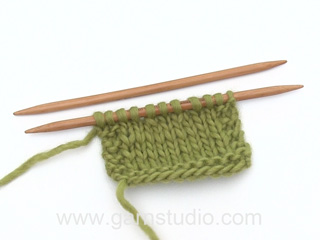
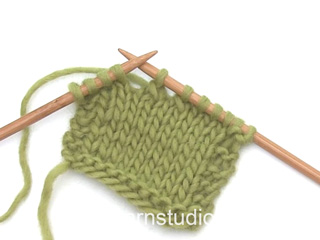

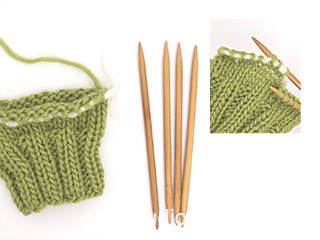

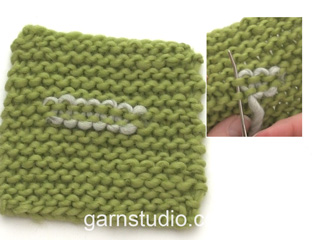
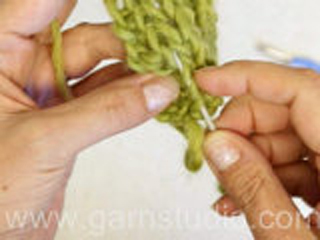
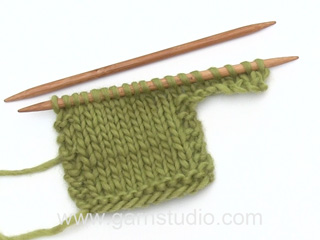


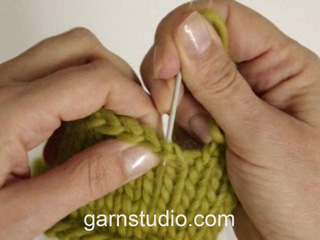
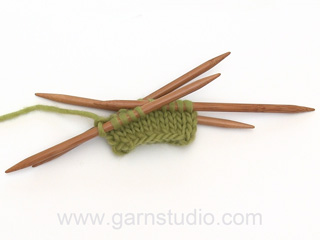

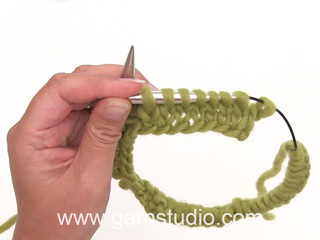
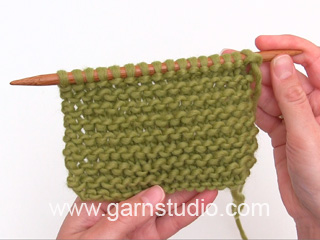
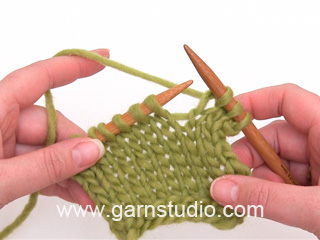
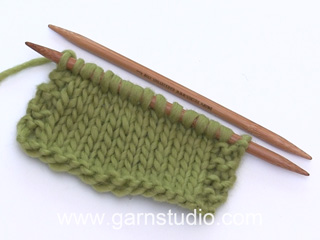
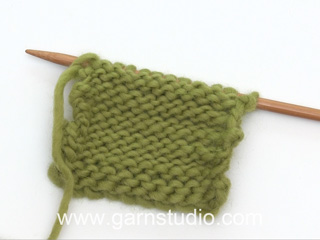
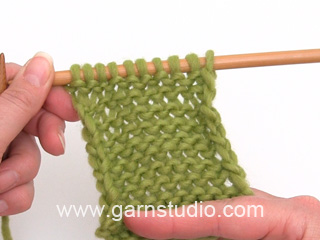
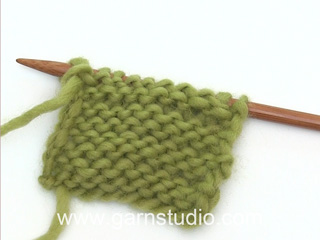

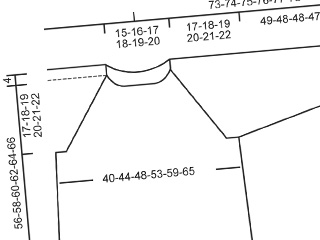
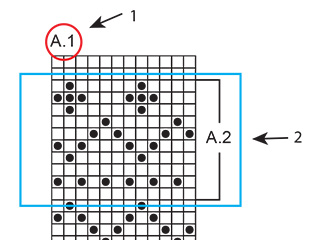
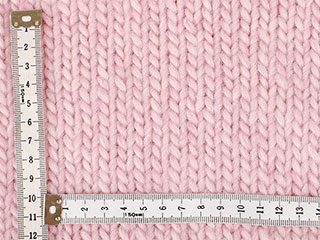
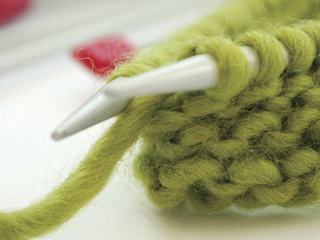
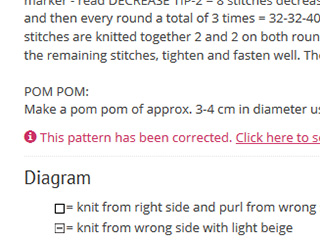
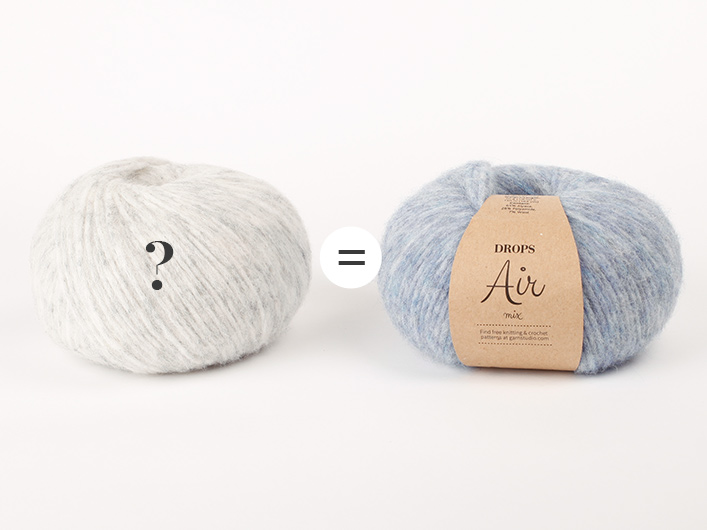

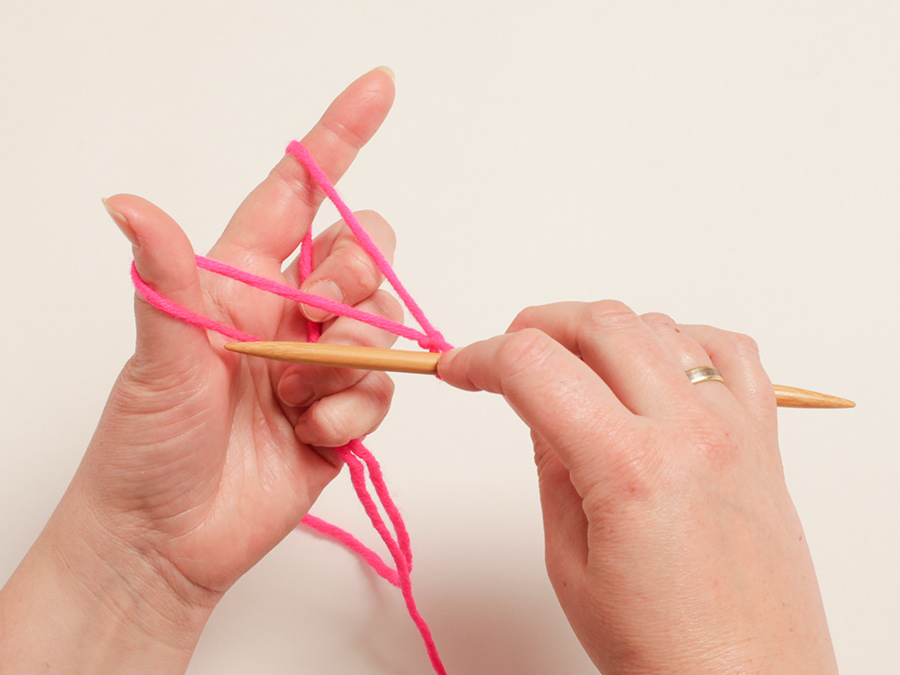
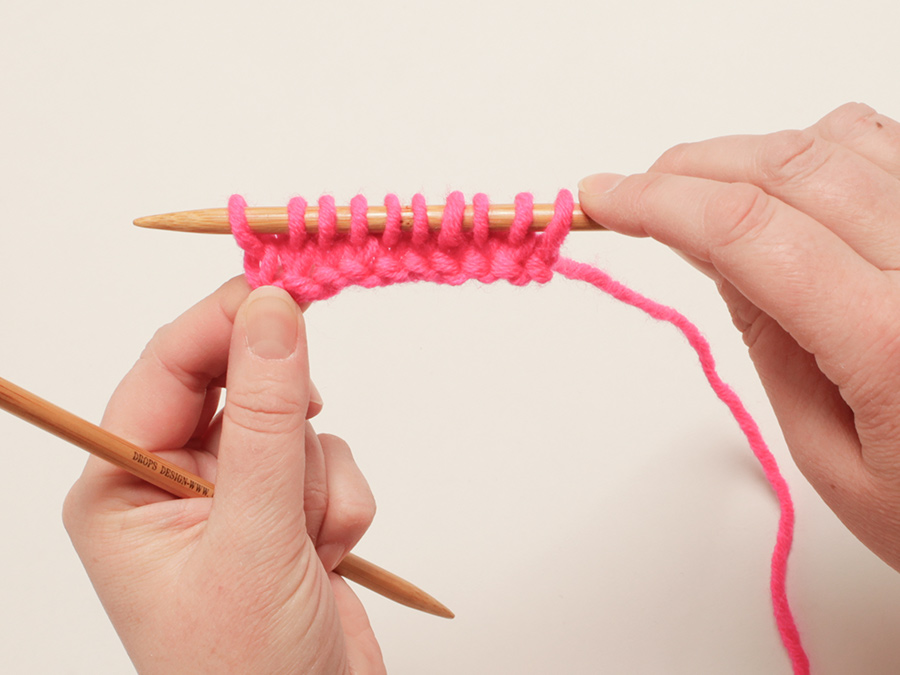

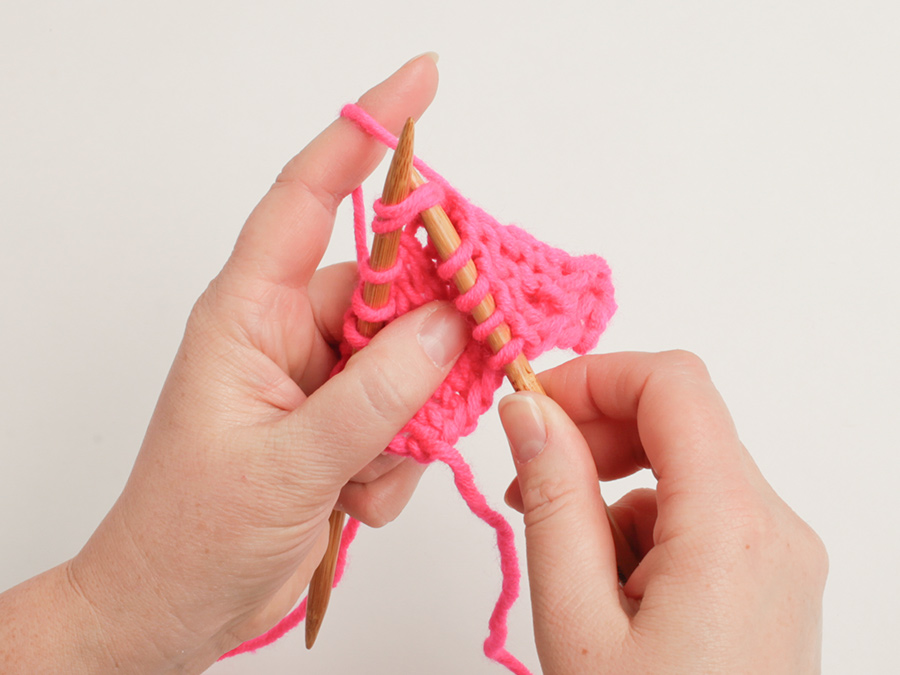
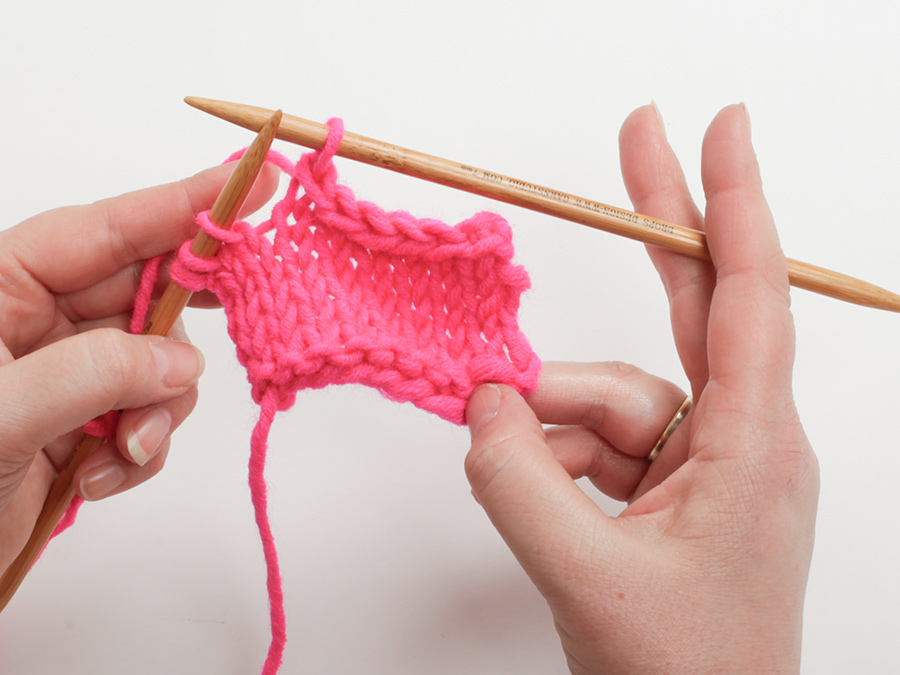
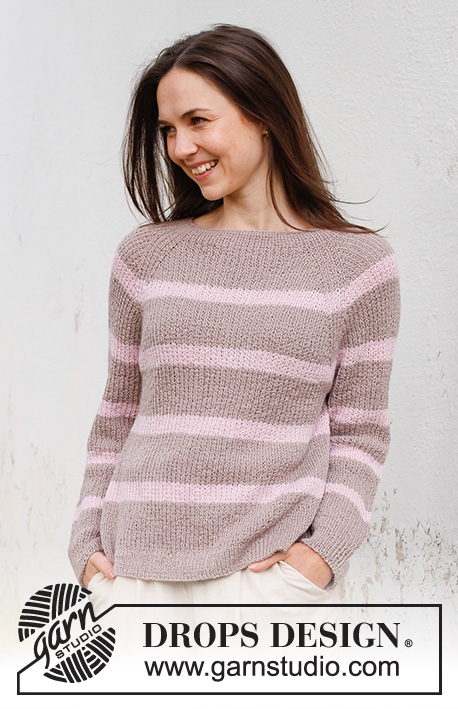
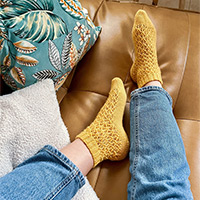
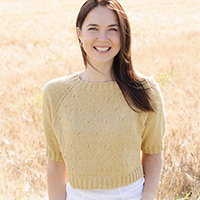
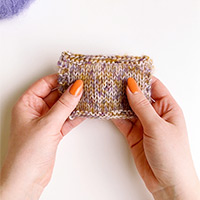
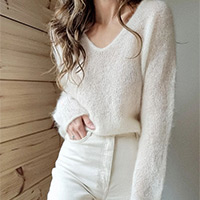

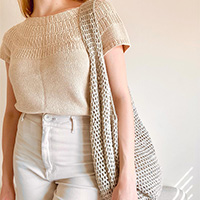
Comments / Questions (59)
Bonsoir. Modèle 057 / 232-15. Concernant les 7m de raglan je pense comprendre rang endroit :1m end/1m env sur les 7 mailles et sur le rang suivant envers comme ces 7m se présentent. Ou 1m end/1m env sur les 7m sur le rang endroit et sur le rang envers suivant les 7m à l envers, ce qui représente un point de riz entre les m.end. pouvez-vous me dire ce que je doit faire exactement. Merci par avance de votre précision. Bonne soirée.
02.04.2024 - 19:38DROPS Design answered:
Bonjour Mme Collignon, A.2 se tricote ainsi au 1er rang, sur l'endroit: 7 mailles endroit; au 2ème rang, sur l'envers: 1 m env, 1 m end, 1 m env, 1 m end, 1 m env, 1 m end, 1 m env. Répétez ces 2 rangs. De même avec A.1 et A.3, on a ainsi des côtes 1 m jersey endroit (case blanche), 1 maille point mousse (alternativement 1 case blanche, 1 croix). Bon tricot!
03.04.2024 - 08:30Bonsoir. J ai commencé le modèle 232.15 en taille XL j ai fait le col.. J ai 141 mailles. Je voulais commencer l empiècement mais je ne comprends pas. Après les 7m du bord, je tricote 7m diagr + 20 / puis 9m diagr + 9m /puis 9m diagr +41m/ puis 9m diagr + 9m / 9m diagramme + 20m ? Ensuite on dit d augmenter le raglan mais au chapitre en dessous c'est noté ne pas augmenter avant 27 cm.de l'ouvrage. Je suis un peu perdue dans vos explications. Merci de m éclairer. Bonne soirée.
01.04.2024 - 18:37DROPS Design answered:
Bonjour Mme Collignon, vous devez augmenter pour le raglan 40 fois au total en taille XL tous les 2 rangs (tous les rangs sur l'endroit), ainsi vous aurez: 141 m + (8x 40) = 461 mailles. Puis, quand toutes les augmentations sont faites, continuez sans augmenter jusqu'à ce que l'ouvrage mesure 27 cm à partir du fil marqueur. Bon tricot!
02.04.2024 - 15:36Alle mooie vesten worden blijkbaar met een rondbreinaald gebreid. Spijtig ! Met gewone breinaalden zie je bijna geen enkele breipatroon ! Als je niet handig bent met rondbreinaalden is dit dus een probleem !
07.03.2024 - 13:44Moment diviser le gilet il y a 133 mailles et les divisions se montent à 105 mailles. Je ne comprends pas
31.01.2024 - 21:32DROPS Design answered:
Bonjour Lucie, vous en êtes au tout début de l'empiècement, correct? Tricotez vos 133 mailles ainsi: 7 m point mousse, A.1 au-dessus des 18 m suivantes, A.2 (= 7 m), A.3 au-dessus des 9 m suivantes, A.2 (7 m), A.3 au-dessus des 37 m suivantes, A.2 (= 7 m), A.3 au-dessus des 9 m suivantes, A.2 (= 7 m), A.3 au-dessus des 18 m suivantes, et terminer par 7 m point mousse, soit 7+18+7+9+7+37+7+9+7+18+7=133; Bon tricot!
01.02.2024 - 08:28Hello! I’m having trouble with following the instructions for the YOKE part. My cast-on is for the size L which is 141 cast-ons; however, the instructions only mentioned a total of 113 stitches. I don’t know how to tackle this so I will be so glad if you could help me out. Thank you in advanced for your hard work!!
27.01.2024 - 11:23DROPS Design answered:
Dear Kiwi, in L you will work the 141 sts as follows: 7 band stitches in garter stitch, A.1 over the next 20 stitches, A.2 (= 7 sts), A.3 over the next 9 stitches, A.2 (= 7 sts), A.3 over the next 41 stitches, A.2 (= 7 sts), A.3 over the next 9 stitches, A.2 (= 7 sts), A.3 over the next 20 stitches, and finish with 7 band stitches in garter stitch = 7+20+7+9+7+41+7+9+7+20+7=141. Happy knitting!
29.01.2024 - 11:41Je n’arrive pas à bien comprendre le raglan. Les augmentations se font de chaque côté des 7 mailles de raglan. Il y a 4 fois 7 mailles. Il faut donc faire une augmentation au début et à la fin des 7 mailles . J’ai besoin de votre éclairage et je vous en remercie
13.01.2024 - 14:44Je fais la taille XL. J'ai bien du mal a comprendre sur le rang envers, je debute A.1 avec maille endroit. Donc la 20 eme maille sera envers. Et la y a la jeté a tricoter, je la fais endroit? Ensuite le A.2 , je fais la 1ere maille envers et termine la 7 eme envers. Apres, le A .3, je devrais tricoter ma jeté endroit pour suivre le motif mais selon la grille A.3, ca debute avec une maille endroit. C'est ca qui me melange beaucoup. J'espere etre clair. Merci
01.01.2024 - 22:03DROPS Design answered:
Bonjour Mme Trudel, si votre dernière maille avant A.2 est la 2ème maille de A.1, tricotez l'augmentation avant A.2 comme la 1ère maille de A.1; si votre dernière maille avant A.2 est la 1ère maille de A.1, tricotez l'augmentation avant A.2 comme la 2ème maille de A.1. De même, si votre première maille avant A.2 est la 1ère de A.2, tricotez l'augmentation après A.2 comme la 2ème maille de A.1 et si votre première maille avant A.2 est la 2ème maille de A.2, tricotez l'augmentation comme la 1ère maille de A.1. Ainsi, on élargit A.1 sur les côtés et on conserver bien les mailles de A.2. Bon tricot!
02.01.2024 - 12:20Stickar 232-15 storlek S Lagt upp 133 masker för halskant När jag kommer till OK ska fördelningen bli 7+18+9+37+9+18+7 Detta blir 105 masker jag har 133. Alltså 28 masker ska fördelas men hur?
08.12.2023 - 11:47DROPS Design answered:
Hej Gertie, 7 framkantsmaskor i rätstickning, A.1 över de nästa 18 maskorna, A.2=7m, A.3 över de nästa 9 maskorna, A.2=7, A.3 över de nästa 37 maskorna, A.2=7, A.3 över de nästa 9 maskorna, A.2=7, A.3 över de nästa 18 maskorna, och avsluta med 7 framkantsmaskor i rätstickning. 7+18+7+9+7+37+7+9+7+18+7= 133 maskor :)
08.12.2023 - 13:57Mönster 232-15 Har stickat halskant men när jag ska gå över till ok stämmer inte antal maskor????
07.12.2023 - 20:14DROPS Design answered:
Hej Gertie, Hvilken størrelse strikker du? Hvor mange masker har du? Hvor mange masker skal du have?
08.12.2023 - 11:10Jag undrar om jag ska sticka diagram när jag ska börja med ränder, vilket i så fall - har stickat 4 cm resår nu? Raglanökningarna görs längre ner på oket?
30.10.2023 - 20:10DROPS Design answered:
Hej Lina, ja du fortsætter med samme mønster og du starter med raglan når du har skiftet til rundpind 3. Sæt gerne et mærke på hver side af A.2 så du ved hvor du skal tage ud til raglan :)
31.10.2023 - 08:59